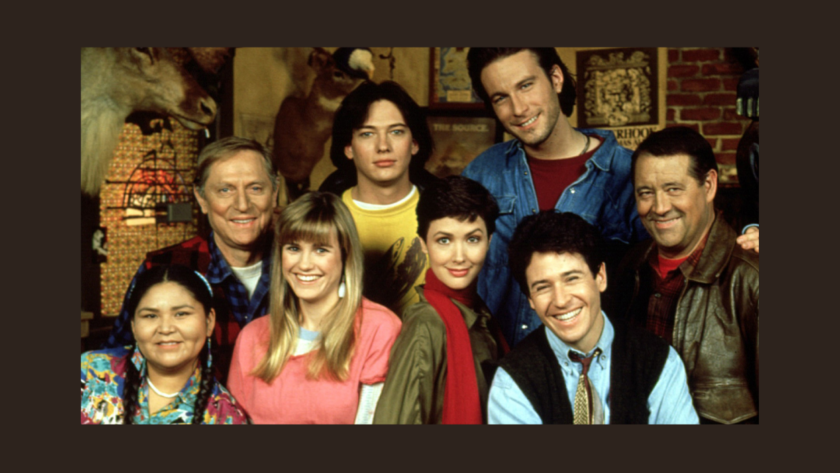Q What suggestions do you have for daily writing exercises? To get going? Is there anything you find works well as a prompt for ideas?
John Yorke: ‘Every morning when I wake up there’s ALWAYS something in the news that makes me go “That would make a great story”. There’s a really good drama strand on BBC Radio 4 called From Fact to Fiction, where writers take a news story every week and create a story around it – it’s an exercise well worth trying yourself as a writing prompt.’
Q I find it difficult to then complete or finish the ideas into a full story! Do you have suggestions for pushing through to the end of a story – rather than leaving strands half done? I tend to abandon things that are imperfect instead of pushing through!
JY: ‘The trick is always to ask yourself, “What is this character’s concrete, tangible goal?” If they have to win something (say, a boxing championship) or find something (a lost ark) it’s much easier to work out their goal. If in doubt, always create an object for a quest – it makes life much easier. Nothing beats the mission of Citizen Kane: to find the meaning of “Rosebud”.’
Q I find when writing anything long that I can happily find a theme and general starting point but get stuck at the point where the character ‘crosses the threshold’. Just wondering how I turn a general theme (love, loss, fear, etc) into an active story?
JY: ‘Good question. In simple terms, again just ask yourself, “What does my character WANT?” It’s very common for newer writers to not quite grab this, because it’s deceptively simple. Again think about a “grail quest” – to find an object – and then make attaining that object symbolic of the story’s theme.
Also don’t be scared of simplicity. My favourite episode of EastEnders ever was when Bianca lost her hairbrush and spent a joyous half hour looking for it….’
Q I’m finding writing Act Four the most difficult, any tips to help make that part of a story stronger?
JY: ‘One easy trick is to look at your Act Two – and then do an inverse mirror image of that, so that the things that go well in Act Two start to become really difficult in Act Four. This works because all narrative aspires to a symmetrical shape.
Another tip is to ask yourself. “What did this character learn at the midpoint?” and then to look at why what he or she learned is so difficult to carry out. So in The Godfather, Michael learns evil at the midpoint, but then he has to go back and deal with the love of his family, and it’s really difficult for him. If you’re really in doubt about Act Four, a fairly common trick is to kill someone close to the hero – there’s a really good example in the novel One Day by David Nicholls.’
Q A character’s internal journeys is another thing I’m battling with. Any tips on how to get their change across more clearly?
JY: ‘That’s a hard question to answer succinctly. But try this: take a character, make him or her want something specific, and then make sure that there’s no way in a million years the character is going to get that UNLESS they change. Think of Bill Murray in Groundhog Day – there’s no way he’s going to get the girl if he stays a miserable cynical bastard….’
Q I was wondering how you’d suggest handling subplots, as it’s something not heavily touched on in your book. Do you recommend a truncated shape of the Roadmap of Change or a differing structure?
JY: ‘All stories fundamentally follow the same structure – so yes, that would work. As long as you give every character a journey or an arc – and ideally link it to the main plot by theme, it normally works well.’
Q But do you think that having all those beats could overload a subplot?
JY: ‘That’s always a danger – but find the shape first and then pare it back to its absolute minimum. There’s no harm in missing stages out – just ask yourself if the story FEELS right. If it does, then it normally is….’
Q How about dual protagonists? Should they share beats in the arc of a film or do they each have their own individual circle to follow?
JY: ‘Gosh, that’s a hard question. Honestly – I wouldn’t think about it like that. It’s easy to get obsessed by structure when you’re starting out as a writer, and to believe it’s the answer to everything. Instead, I’d encourage you to ask, “Do I love this character?” and “Is this a really exciting story?” The rest will sort itself out – great structure is as much a product of the unconscious mind as it is of study. Also think about what happened in the last duel-protagonist films you saw. In Thelma and Louise, for example. the protagonists share beats, but have individual ones too.’
Q I think the imagery of a dual-protagonist arc is like a double helix. They come together for certain beats then go off and have their own discovery, rinse and repeat.
JY: ‘Yes that’s a really nice image. It’s always good to observe how these kinds of stories are built around opposites who learn from each other.’
Q How do you balance the need to subvert expectations with the need to follow a formula?
JY: ‘I don’t know that there IS a contradiction. Subverting expectations should be part of the formula of any story if it’s working correctly. If in doubt, take a trick from Agatha Christie (or most recently a great film, The Disappearance Of Alice Creed). Work out your ending, and then tell four lies in front of it to hide it – so everything you see at the beginning is a lie. Actually, if you watch Father Brown on BBC daytime TV, you’ll notice that it often pulls off a similar trick really well.’



